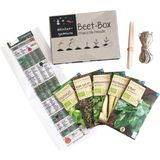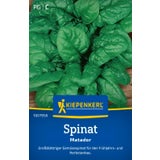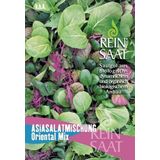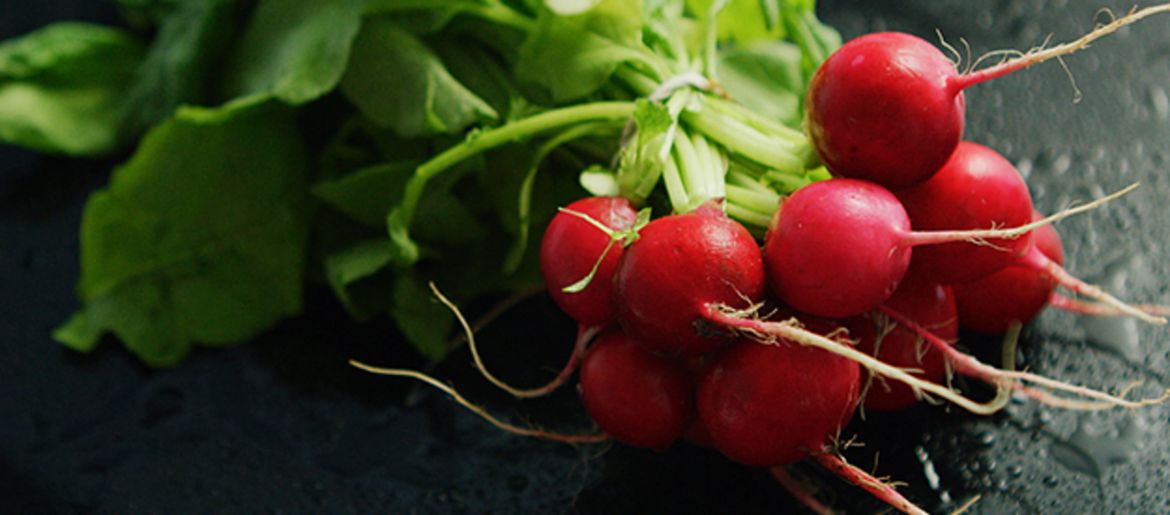Growing winter vegetables in a raised bed
In raised beds you can grow winter vegetables thanks to the heat generated in them, making the conditions optimal. Here you can find out everything you need to know.
Build it yourself or buy it?
Before you grow winter vegetables in a raised bed, the question arises whether you want to build a raised bed yourself or buy one right away. The selection of finished raised beds is large. If you prefer to get started on your own, you will find building instructions for many different raised bed variants on the Internet.
In any case, it is important that you line the raised bed with bubble wrap before you fill it. The film protects the walls from too much moisture.
How do I fill a raised bed correctly?
A raised bed should always have a layer structure. This is not only typical, but also extremely useful.
Start at the very bottom with a layer of tree and shrub pruning. On top of that come green waste and then garden soil. As the fourth and final layer, put a mixture of compost and potting soil on top.
Then you plant the seeds or seedlings of the plants that you want to grow in the bed in this top layer.
Protection against the cold and moisture
Thanks to the layered structure and the slowly rotting raw materials, heat is created in the raised bed. Unfortunately, this is not always sufficient protection against moisture or cold. So you should consider taking additional measures. Roofs or polytunnels are suitable for this, with which you can additionally protect the sowing from adverse conditions.
Always remember that the plants need to breathe. So you should leave the covers open during the day, at least on the sides of the head, so that the plants get enough oxygen.
Instead of a foil tunnel, you can also use a double fleece layer to protect the plants from frost.
Grow cold-resistant winter vegetables
Typical winter vegetables need to be planted as early as May if you want to harvest them between November and February.
When harvesting it is then important to pay attention to the frost. When you harvest the vegetables, make sure that they are frost-free, otherwise, it will damage the taste. (Except for sprouts, which become less bitter due to the frost.)
Lettuce plants that feel good even at low temperatures include lamb's lettuce, lettuce or spinach. Bird's lettuce grows all winter long, but you can only harvest it once. There are also leeks and radishes. These two plants can tolerate low temperatures too. Note, however, that if you want to harvest leeks in winter, you need to plant leeks early in the year.
Here are some types of hardy vegetables and the best time to sow them to enjoy in winter:
- Asian salads
- Sowing: September to November
- Planting: September to November
- Harvest: November to March
- Baby leaf salads
- Sowing: August
- Planting: September
- Harvest: November to January
- Sprouts
- Sowing: April
- Planting: May
- Harvest: November to March
- Leeks
- Sowing: February
- Planting: May
- Harvest: November to March
- Radish
- Sowing: September or January
- Planting: -
- Harvest: November / December or March
- Rocket
- Sowing: September to early November
- Planting: September to early November
- Harvest: November to March
- Spinach
- Sowing: October
- Planting: November
- Harvest: January to March
- Lamb's lettuce
- Sowing: September
- Planting: October / November
- Harvest: November / December
What to do in spring
In spring it is time to harvest what is left of the previous year. This is usually no longer edible but is ideal as a fertiliser if it is crushed.
If the level of the raised bed has dropped, you simply fill the bed with soil. Over time, a relatively solid soil structure with stable microflora develops.
Once you have done all of this, you can replant the bed again.
Related products
-
 5.0 (1)
5.0 (1)Samen Maier Organic Box "Winter Vegetables"
- 5 types of organic seeds
- With practical plant labels
- Ideal as a gift
€ 15,99Delivery by January 02
-
 € 1,29 (€ 53,75 / kg)
€ 1,29 (€ 53,75 / kg)Delivery by January 02
-
 € 3,79
€ 3,79Delivery by January 02
-

ReinSaat Wild Rocket ''Rucola selvatica''
- Narrow leaves
- Slow growing
- Spicy taste
€ 3,79Delivery by January 02
Magazine Articles:
Discover Bloomling:
-
Austria: Free standard delivery from € 39,90
-
Free
returns -
Delivery in 2 business days.
More than 11.450 products

